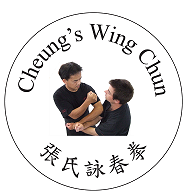The Lion Dance, Kung Fu and Martial Art 舞獅- 功夫- 武術
At almost every major Chinese celebration such as the Chinese New year and at grand opening events, the Lion dance is performed against a backdrop of loud fireworks, clashing cymbals and beating drums. The ceremony begins with the chosen delegate dotting the eyes of the lion to bring it to life. From there on, the lion dances in accordance with the music to ward off bad sprits and to bring in good luck and prosperity. To understand just how this ancient dance is related to Kung Fu and Wing Chun, we begin with a brief history lesson and by removing the lion’s clothing.
The Head and Tail of the Lion
 Exactly when the Lion dance appeared in Chinese culture is unknown. Popular belief is that the dance dates back to the Qin Dynasty during the unification of China from 220 BC.
Exactly when the Lion dance appeared in Chinese culture is unknown. Popular belief is that the dance dates back to the Qin Dynasty during the unification of China from 220 BC.
The head resembles a dog (regarded as a guardian by the northern Chinese). The south contributed the cat’s movement to the dance.
The dance flourished during the Tang Dynasty, during a peaceful reign from 618 AD to 907 AD where the performers, the acrobats beneath the lion’s clothing trained long and hard to out-perform one another. It is here we bring the term Kung Fu.
Kung Fu
** A western misinterpretation, Kung Fu itself is not a martial art or a ‘style’. Its actual meaning is ‘achievement with effort and time invested’. Thus, a skilled fashion designer may possess good Kung Fu in the way the cloths are assemble and yet may not have any knowledge of the world of martial arts.**
For the acrobats, the pressure to perform more elaborate moves meant more lifts, kicks and rolls while still maintaining the illusion of a dancing lion. Their effort paved the way for martial artists to remain hidden beneath the lion costume during the early Ching Dynasty where martial arts was forbidden but later revived.
Martial Art
The lion dance thus contains a mixture of martial arts from various families , such as the Hung (typically representing wide horse stance), Mok (representing the twisting and turning) and Choi-li-fut which is shown by the criss-crossing of steps.
In our Wing Chun Association, we have taken elements from the dance and have incorporated them into our warm up exercises.
At its core, all martial arts and lion dances, the practitioners are required tohave great strength in their mid-drift – one of the main sources of power behind all techniques.
So, when you next come across this dance and having tune yourself out of the monotonous banging of cymbals and drums (the music to which the performers take their cue from) be mindful of its history and try and spot the elements of martial arts from the acrobatic and theatrical side of the performance.
Here is a little routine performed by a good friend of mine- Sifu Tsang and myself:
www.cheungswingchun.co.uk 張氏詠春https://videopress.com/embed/tQNwzDMk?hd=0&loop=0&autoPlay=0&permalink=1
**A spectator should try to imagine that it is a cat and not a person in costume**
